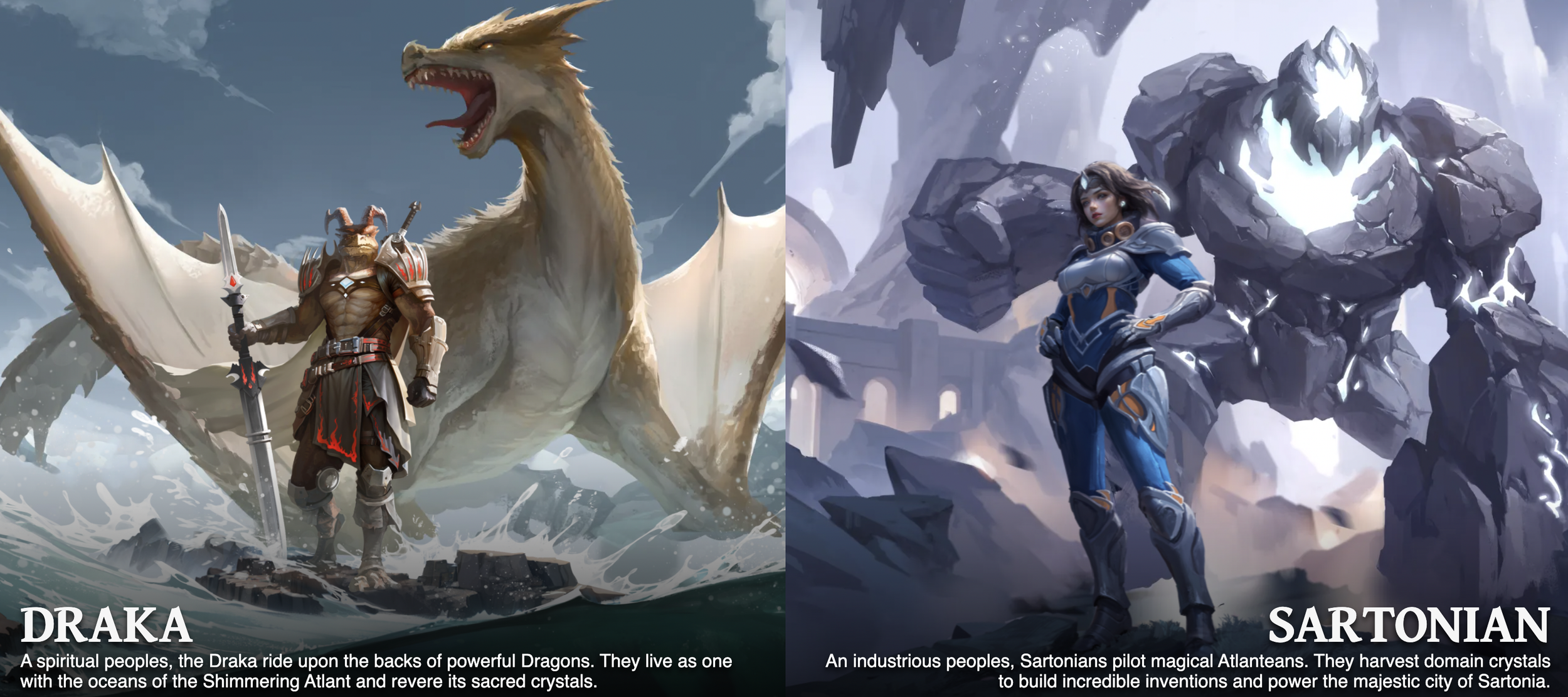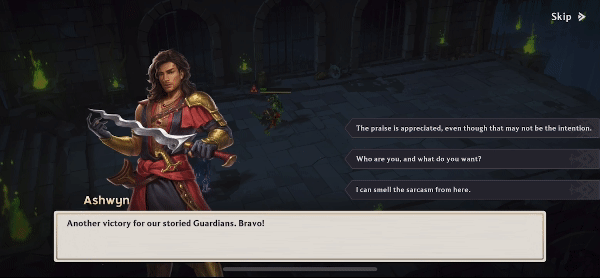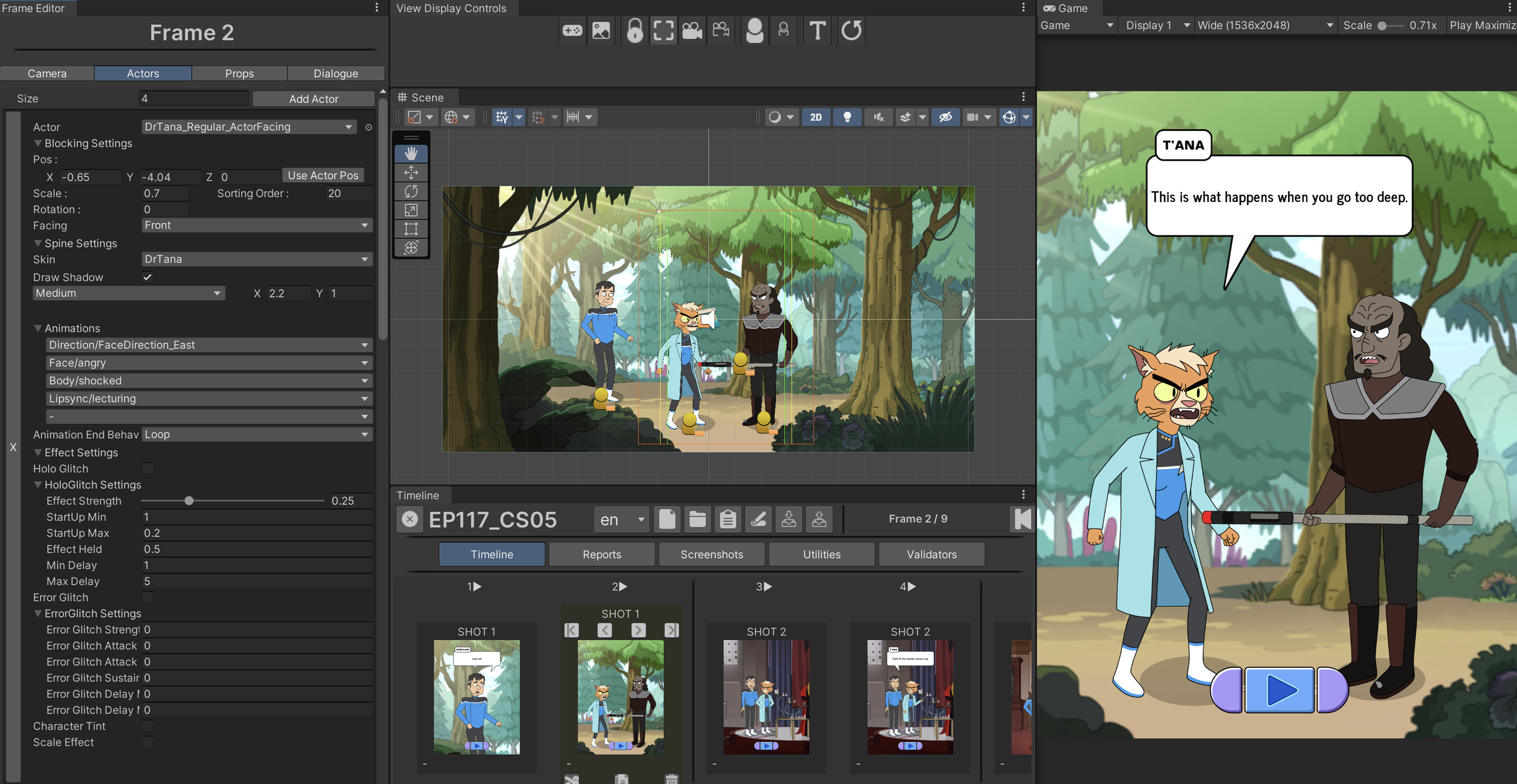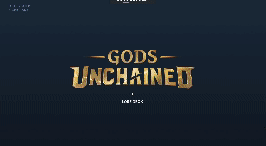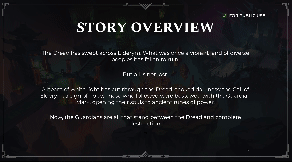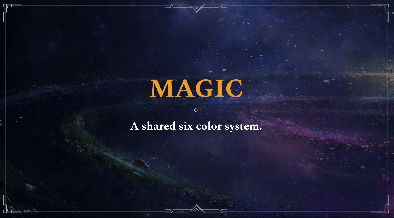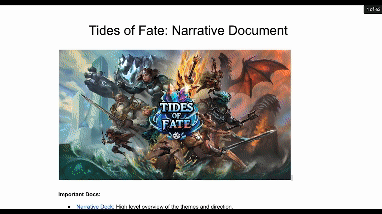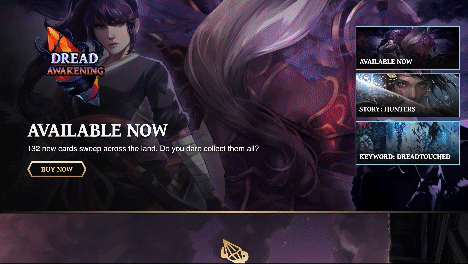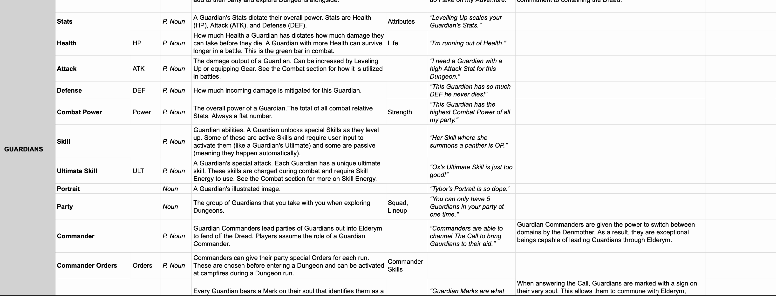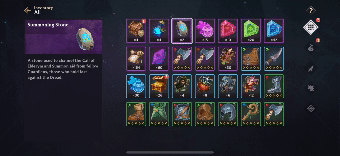WORK
(FROM HERE AND THERE)
STORYTELLING IN MANY FORMS
Games are multifaceted experiences. Combining all the pieces is no easy task for an inauthentic element can jeopardise a player’s immersion. Solid holistic design holds all the pieces together. Below you’ll find glimpses of my skills building worlds that excite players, piece by piece.
STORIES
While things can get whacky, traditional stories are central to player engagement. In Gods Unchained, I have worked on stories like the rallying cry of Band of the Wolf, the epic adventure of Tides of Fate, or the Gothic Horror saga of Dread Awakening – all that follow a traditional long and short form output. I’ve accompanied these with interactive storytelling avenues like Discord ARGs, as well as penned whole narrative arcs and stories for the RPG Guild of Guardians. I’ve even penned and designed interactive stories where players choose a side, and their decisions and gameplay output affects where the stories end up!
Dialogue
I am a seasoned dialogue writer from character barks to fully fledged stories. For Guild of Guardians, I wrote the main arc which spans four worlds, introducing players to the world, the main characters, and the stakes. The arc is self-contained with everything leading up to the climactic moment, but the story is designed such that the game can continue on a s a live service game, making way for future releases. Not only did I plan it, but I wrote the dialogue and strings to boot. For Power Rangers, I wrote and built and episodes, events, and character arcs that worked to reward and deepen player engagement.
Above: Text to game in Guilds of Guardians. Below: text to game in Power Rangers: Mighty Force. Gotta love loc spreadsheets.
FROM IDEA TO REALITY
CHARACTER DESIGN
Designing characters in RPGs is no small feat, and yet they often require oh so many of them. I have designed hundreds of characters, coming up with the concept, thematic, how they fit in the narrative, the audience they appeal to, and then working with artists and game developers to bring them to life. For a character to have meaning to the player, they need to naturally associate the character with the game space. This is achieved using many tiny hooks, whether it’s their look, movement, story, audio, or gameplay abilities, all work to create a sense of authenticity and connection.
(Above) From brief to game: Two examples of characters who begin with an idea (left) and end up as playable entities (right), whether it be TCG or RPG!
IN ENGINE
Bringing stories to life takes many forms and getting on the tools to build in engine is part of the fun. For both Star Trek and Power Rangers games, I not only wrote the stories, but built them in Unity. This would span character movements, distance tracking, blocking, camera movements, and audio syncing to create immersive stories. Working closely with engineering and art teams to bring these characters to life was paramount.
(Above) A Star Trek excerpt where Dr. T’Ana and Nurse Westlake work through overarching issues while navigating the Talosian Gauntlet of the Mind.
WORLDBUILDING
Worlds can be sprawling, limitless things. But the best worlds are those that have defined rules. If you create a sandbox, the things people can create within it are endlessly impressive. Whether it’s creating systems that span multiple games, world histories and cultures, characters and magic systems, or even genre-specific moments in time, I have deep experience creating and building worlds with rich lore, themes, and player framing that help players ground themselves in and navigate various digital playgrounds.
HOLISTIC EXPERIENCES
MARKETING
We all have humble beginnings (including the below marketing poster). Crafting a story is all well and good, but what use is it if no one knows what’s going on? A background in marketing has taught me how to tell a story in many different ways. Whether it be through gameplay, theming, branding, websites, ARGs, card games, social media, or a mixture of the above, taking a story and providing multiple touchpoints for users to feel immersed in (and drawn to) a story and its characters is crucial. As a Narrative Designer, my job is done when the story is penned, and the characters are designed, it’s working those experiences through everything that really makes a story come to life. I’ve led projects on their release strategies from a brand and storytelling perspective, designed launch websites, and wrote the scripts for cinematic trailers and release overviews.
TERMINOLOGY
Consistency is key… as any good editor knows. When so many people work in one space, speaking the same language is so important. Engineers, creatives, marketers, ecommerce, leadership, juniors… everyone has a different way of looking at the world. Being a word nerd, I specialise in creative game terminology that takes the big ideas of all these parties and creating consistency, theming it within our various worlds, and helping it meet the needs of all involved so we can stop getting tangled in language and continue creating.

